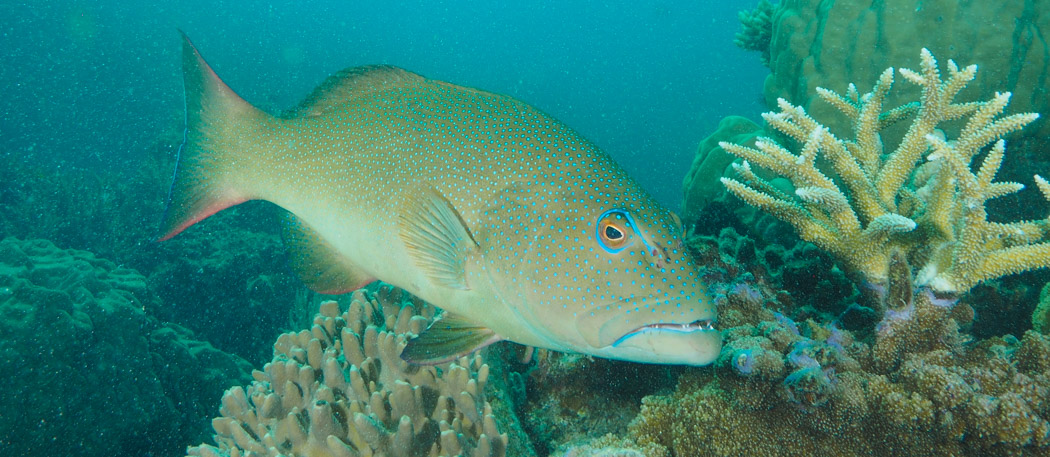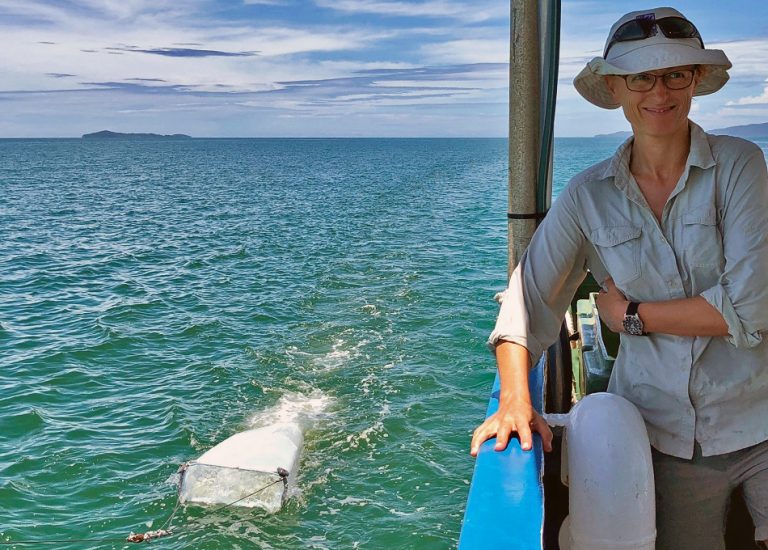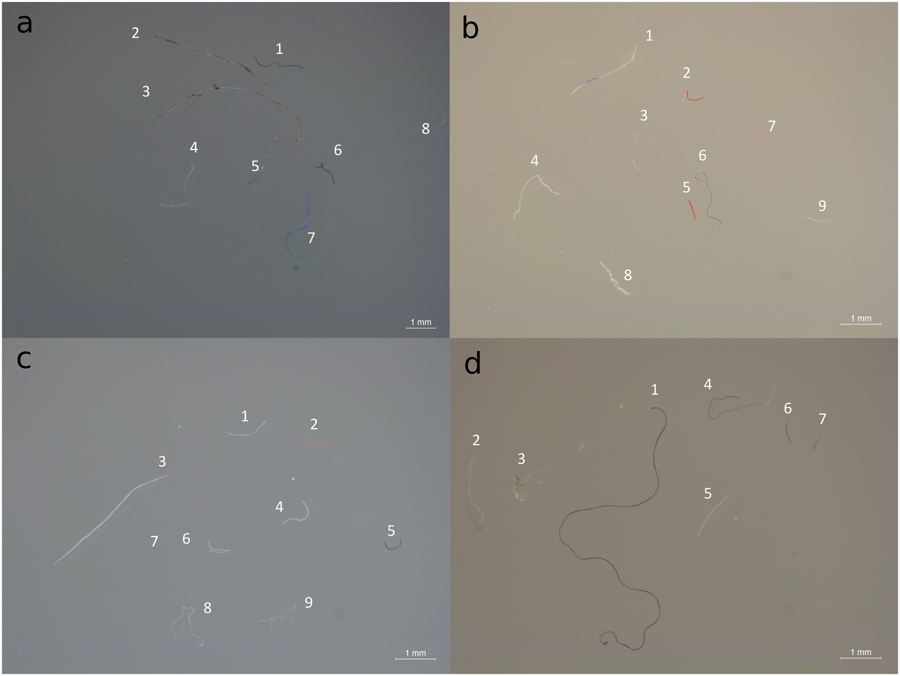
Leopard Coral Trout, Plectropomus leopardus, a species found to be ingesting microplastic debris on the Great Barrier Reef. Image: AIMS.
Australian Institute of Marine Science
Microplastics and other man-made fibres have been found in a popular fish species on the Great Barrier Reef.
This is the first study to report the presence of microdebris in wild-caught commercial fish in the World Heritage Area.
Researchers from the Australian Institute of Marine Science in Townsville, found 115 items of man-made debris in the gastro-intestinal tracts of 19 out of 20 juvenile coral trout collected on coral reefs at Lizard, Orpheus, Heron, and One Tree Islands.

Dr. Frederieke Kroon collects microplastic samples in the waters off the Great Barrier Reef on board AIMS RV Cape Ferguson.
AIMS marine ecologist Dr. Frederieke Kroon said 94 percent of the items were a mix of semi-synthetic and naturally-derived materials, while only 6 percent was synthetic.
“Marine debris was visually separated from the gut contents and examined in our laboratories at AIMS, with scientists looking for materials with a polymer composition, using the latest in spectroscopy technology.
“We examined potential ingestion of man-made debris in one-year-old coral trout (grouper) of two species, Plectropomus leopardus, and P. maculatus, which comprise high-value commercial and recreational fisheries species on the Great Barrier Reef,” Dr. Kroon said.

Photographs of representative marine microdebris in juvenile coral trout. Marine microdebris was detected in the gastrointestinal tract of 20 individual juvenile coral trout (Plectropomus leopardus and P. maculatus) collected on reefs around (a) Lizard Island, (b) Orpheus Island, (c) Heron Island, and (d) One Tree Island, in the Great Barrier Reef World Heritage Area, Australia, in 2011. Examples of chemical type assignments for marine microdebris include: (a) semi-synthetic: cellulose-derived (4), NFPC: nylon (5); naturally-derived: cellulose-natural (1, 6, 7); (b) semi-synthetic: cellulose-derived (1, 2, 3, 5, 6), NFPC: nylon (8); naturally-derived: cellulose-natural (7), keratin (4); (c) synthetic: polyester (8); semi-synthetic: NFPC: nylon (5, 6), NFPC: polyester (1); naturally-derived: cellulose-natural (2, 3, 9); (d) semi-synthetic: cellulose-derived (6), NFPC: nylon (5), NFPC: polyurethane (1); naturally-derived: cellulose-natural (4, 7), keratin (3). For the following items, natural origin (a2, a3, a8) or contamination (b9, c4) could not be ruled out. Chemical type was not assigned to fibre c7 (fibre was missing) and d2 (<60% match). NFPC = natural fibre reinforced polymer composites.
As part of the study, AIMS researchers developed a system to clearly identify and classify ingested marine microdebris into three groups; synthetic, semi-synthetic and naturally-derived items.
The study did not examine the potential risk to human consumers, as the items were detected in the fishes’ guts which is traditionally removed before consumption.
Long-Term Effects: Unknown
“Applying this classification in our study showed man-made items such as rayon, which is a semi-synthetic, were much more common in the fish gut than plastic items such as polyester,” Dr Kroon said.
“This new classification will improve our understanding of ingestion of microplastics versus other man-made debris.
“In the future, we hope this system of classification will help in assessing the risk of such ingestion to the health of the fish, as well as of potential human consumers.”
“In our study, the condition of the coral trout did not appear to be affected by the abundance of ingested microdebris.
“However, we do not know whether there could be any longer-term effects on coral trout reproduction or mortality.”
The source of the microfibres detected in juvenile coral trout is currently unclear and could range from domestic, land-based and/or shipping-based sewage discharges, or international sources that may be delivering fibres to the Great Barrier Reef through oceanic or atmospheric transport.
AIMS researchers are currently examining other seafood species for microplastic contamination.
REFERENCE
The research paper: Classification of marine microdebris: A review and case study on fish from the Great Barrier Reef, Australia is published in Scientific Reports, Volume 8, Article number: 16422 (2018).




